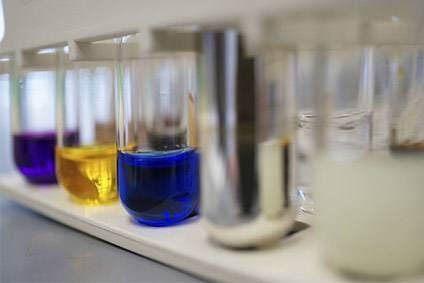
PFAS, a group of manufactured chemicals commonly used since the 1940s, are called “forever chemicals” because bacteria can’t eat them, fire can’t incinerate them, and water can’t dilute them. And, if they are buried, they leech into surrounding soil, becoming a persistent problem for generations to come.
Using low temperatures and inexpensive, common reagents, the research team at Northwestern University have developed a process that causes two major classes of PFAS compounds to fall apart — leaving behind only benign end products.
The simple technique, they say, potentially could be a powerful solution for finally disposing of these harmful chemicals, which are linked to many dangerous health effects in humans, livestock and the environment. The results have been published in the Science Journal.
“PFAS has become a major societal problem,” said Northwestern’s William Dichtel, who led the study. “Even just a tiny, tiny amount of PFAS causes negative health effects, and it does not break down. We can’t just wait out this problem. We wanted to use chemistry to address this problem and create a solution that the world can use. It’s exciting because of how simple — yet unrecognized — our solution is.”
Short for per- and polyfluoroalkyl substances, PFAS has been in use for 70 years as nonstick and waterproofing agents. They are commonly found in water-repellent fabrics, non-stick cookware, waterproof cosmetics, firefighting foams, and products that resist grease and oil.
Over the years, however, PFAS has made its way out of consumer goods and into drinking water. Although the health effects are not yet fully understood, PFAS exposure is strongly associated with decreased fertility, developmental effects in children, increased risks of various types of cancer, reduced immunity to fight infections and increased cholesterol levels.
With these adverse health effects in mind, the US Environmental Protection Agency (EPA) recently declared several PFAS as unsafe — even at trace levels.
The secret to PFAS’s indestructibility lies in its chemical bonds. PFAS contains many carbon-fluorine bonds, which are the strongest bonds in organic chemistry. As the most electronegative element in the periodic table, fluorine wants electrons — and badly. Carbon, on the other hand, is more willing to give up its electrons.
“When you have that kind of difference between two atoms — and they are roughly the same size, which carbon and fluorine are — that’s the recipe for a really strong bond,” Dichtel explained.
In previous attempts to destroy PFAS, other researchers have used high temperatures — up to 400 degrees Celsius. Dichtel’s new technique relies on milder conditions and a simple, inexpensive reagent, making the solution potentially more practical for widespread use.
Next, Dichtel’s team will test the effectiveness of its new strategy on other types of PFAS. In the current study, they successfully degraded 10 perfluoroalkyl carboxylic acids (PFCAs) and perfluoroalkyl ether carboxylic acids (PFECAs), including perfluorooctanoic acid (PFOA) and one of its common replacements, known as GenX — two of the most prominent PFAS compounds. The US EPA, however, has identified more than 12,000 PFAS compounds.


